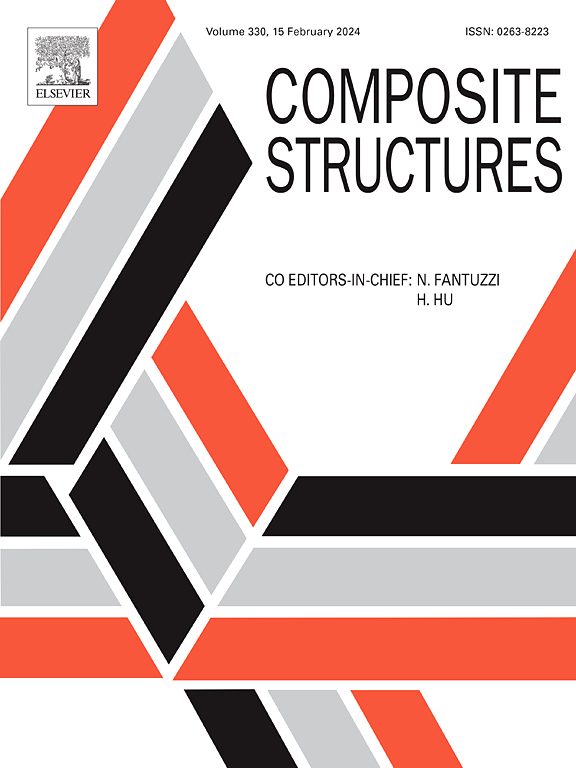Strength and energy absorption characteristic of nanoparticle-reinforced composites considering interface curvature dependence
IF 6.3
2区 材料科学
Q1 MATERIALS SCIENCE, COMPOSITES
引用次数: 0
Abstract
Nanoparticle-reinforced composites (NPRCs) have attracted significant interest as an alternative to conventional materials due to excellent mechanical properties. However, there is no mature finite element-based computational method to evaluate the strength and energy absorption properties of NPRCs, especially not taking into account the influence of interfacial effects. We developed a new finite interface element considering interface curvature dependence and established a simulation method for calculating the Young’s modulus and yield strength of NPRCs. We investigated the impact of nanoparticle modulus, geometric distribution, and interface effects on the Young’s modulus, yield strength, and energy absorption characteristics of NPRCs. The results indicate interface bending stiffness moderately enhances the Young’s modulus of NPRCs, but this enhancement diminishes as particle modulus increases. Additionally, the Young’s modulus of NPRC usually increases with the addition of particles, thus, significant particle agglomeration markedly reduces it. Furthermore, interface bending stiffness increases strain energy density in NPMs but decreases its energy absorption efficiency. The thin-walled structure within nanoporous materials (NPMs) is particularly susceptible to buckling under external loads, which markedly increases dependence of yield strength on surface bending stiffness. This study provides a robust, scientifically validated approach to accurately predict the mechanical properties of advanced composite.
求助全文
约1分钟内获得全文
求助全文
来源期刊

Composite Structures
工程技术-材料科学:复合
CiteScore
12.00
自引率
12.70%
发文量
1246
审稿时长
78 days
期刊介绍:
The past few decades have seen outstanding advances in the use of composite materials in structural applications. There can be little doubt that, within engineering circles, composites have revolutionised traditional design concepts and made possible an unparalleled range of new and exciting possibilities as viable materials for construction. Composite Structures, an International Journal, disseminates knowledge between users, manufacturers, designers and researchers involved in structures or structural components manufactured using composite materials.
The journal publishes papers which contribute to knowledge in the use of composite materials in engineering structures. Papers deal with design, research and development studies, experimental investigations, theoretical analysis and fabrication techniques relevant to the application of composites in load-bearing components for assemblies, ranging from individual components such as plates and shells to complete composite structures.
 求助内容:
求助内容: 应助结果提醒方式:
应助结果提醒方式:


